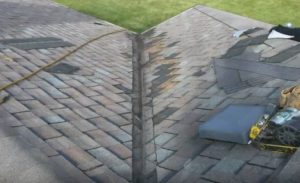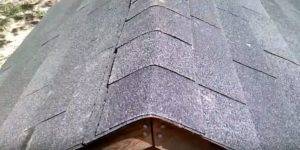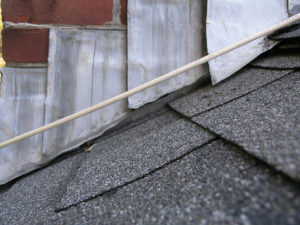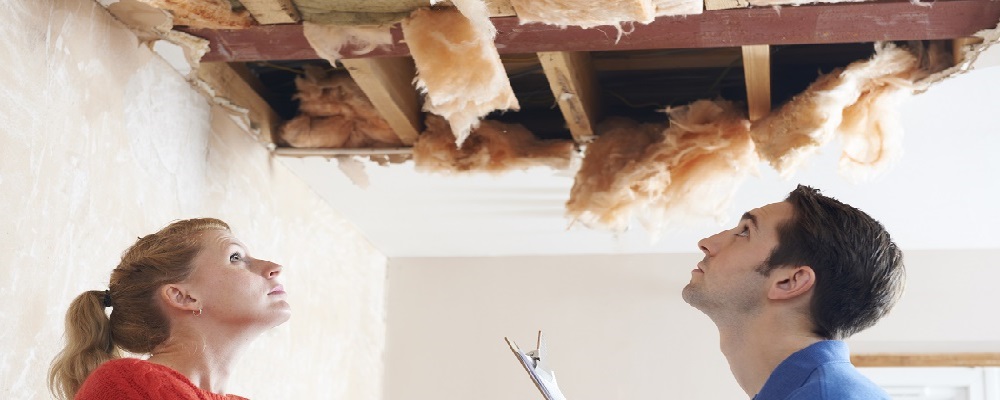So an odd colored ring or spot suddenly and mysteriously shows up on your ceiling, you’re thinking to yourself “hey, maybe it’s just some condensation from the cold weather we’ve been having”. Sorry pal, chances are good you’ve got a roof leak. Unfortunately like most home-related issues, leaky roofs don’t fix themselves; they usually need immediate attention. Water leaks can quickly produce mold, rotted joists, insulation and drywall damage given the right conditions. Often times the spot is just the ‘tip of the iceberg’, insidiously hiding the larger damage of a longer running roof issue. The good news is: compared to other household repairs, fixing a leaking roof is easy.
Now the bad news: finding the leak is harder than it sounds, even for seasoned professional. It takes a strategy, some know-how and – like a good detective – you’ve got to follow the clues to get to the source. In part one of Fixing Your Leaking Roof, we’ll delve into how to successfully troubleshoot suspected roof leaks like a pro so you can quickly fix the leak before it becomes a major issue.
Before You Begin
Most residential homes in the United States have pitched roofs where water can travel a good distance away from the leak down the roof joists and panels. As a result, finding the leak based on the location of the offending spot really only gives you a clue of which side of the roof the leak may be occurring. But like any good detective, this clue can give enough information to start the investigation.
At this point you’ll need a few items to begin your analysis:
- A flash light
- A willing helper
- A garden hose with nozzle
- 2 cell phones or walkie-talkies
Locating the Leak
Before you get on your roof with a garden hose (we’ll get to that in a minute), try accessing your attic or exposed dormer area above the discoloration and take a look around with a flashlight. From here you can get a good idea of the any underlying damage and, if you’re lucky, you’ll see a “mold trail” in the general area where the leak is occurring. Be sure to visually cover as much area as you can as mold and water can find their way into even the most hidden pockets of your home’s structure.
Next you’ll need to get on your roof. Leave your buddy behind in the attic and get on your roof with the garden hose.
*Safety Tip: If you plan on getting on your roof, we highly recommend a roof stabilizer (PICTURE) and roofing shoes for better grip.
Before unloading a deluge of water, walk the roof to check for any obvious signs of external damage like a missing shingle or dislodged flashing around the joints. If nothing immediately jumps out at you, we suggest looking for obvious signs of fatigue in these areas:
Roof Valleys

Vent Pipes
- Missing or dislodged nails on the pipe flashing
- Rubber boots are cracked and need to be replaced
- Flashing on the vent pipes are rusted
Ridge Cap

- The ridge cap shingles of your roof takes most of the weather related beating and should be checked for loose nails or bulging
Chimney / Dormers

- Make sure that flashing around the Chimneys and Dormers are properly overlapping. Often times they become dislodged and have slid over the preceding piece creating a gap
- Another area of concern is on the corner joint. Flashing here requires expert installation and many times we see leaking due to shoddy workmanship
- Missing or rotted siding on the dormer
- Check the caulk integrity between flashing
At this point you’ve probably uncovered a few problem areas to concentrate on. Spray a generous amount of water on these areas, coordinating with your partner under the house to see where the water is making its way through.
Small Leaks Can Mean BIG damage
Over the years we’ve been involved with dozens of projects where the homeowners could have avoided huge Roofing Costs involving repair and remediation had they just dealt with that spot on the ceiling earlier. If you get anything from this article, remember: Do yourself a huge favor and deal with any wall or ceiling discoloration like it’s an actual roof leak.
If you’re not comfortable getting on your roof or if the leak seems extensive, don’t hesitate to contact a professional like TRI Roofing. We service the Durham / Raleigh / Chapel Triangle and would be happy to talk to you about your specific needs. We’re happy to give out free advice too! Call us today at (919) 296-0017.







